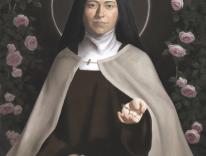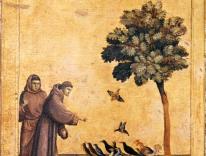It’s the start of a new day in Assisi. A chorus of church bells echoes off the well-scrubbed streets. Flowers overflow from the window boxes, cascading down pink stone walls. The Piazza del Commune, the town’s small historic center, is already beginning to fill with the day’s visitors.
If Disneyland is the happiest place on Earth, then Assisi is a close second. And it owes it all to its favorite son, St. Francis, Italy’s larger-than-life patron saint. His “enchanting nature,” as Pope John XXIII put it, “seems to hover in the air,” attracting thousands of pilgrims and tourists every year. But during the Nazi occupation, which ended sixty years ago in June, Assisi attracted thousands of desperate refugees. For some it was life-saving.
I’m sitting at an outdoor café in the piazza with one of those refugees, Graziella Viterbi, a Jewish grandmother with a mane of short white hair and bright, engaging eyes. She orders Coca-Colas for both of us and with a thoughtful smile tells me, “Assisi’s been my home for fifty-six years.”
“My family name is from the town of Viterbo near Rome,” she says. “We have been in Rome before Christ, or perhaps arrived when Titus destroyed the Temple.” As she speaks, I can’t help but imagine her as a girl in the innocent days before the war.
Graziella arrived in Assisi in October 1943, shortly after Italy’s sudden surrender to the Americans and the Brits. Already angered by the Italian government’s refusal to hand over Jews, Hitler had turned on his former ally with a vengeance. The Nazis occupied the country and the Viterbis fled Padua, the family’s home for five hundred years, where her father, Emilio Viterbi, was a professor of chemistry and dean of the University of Padua, which was founded while St. Francis was still alive.
Emilio was an admirer of Francis and kept a copy of inspirational stories from the saint’s life by his bed. Perhaps, he thought, if they could reach Assisi, two hundred miles to the south, they could find shelter. When they arrived, they found the SS, the Gestapo, and the Italian Fascist police relaxing at the Café Excelsior, the wartime name of the café where Graziella and I are seated. Unsure of where to turn, Emilio sought help from Bishop Nicolini of Assisi. He was “a loving man,” she tells me, “like a boy in his enthusiasm, clever with a wonderful heart.” He told her father, “There is no room left except my bedroom and my office. However, I can make do and sleep in the office. The bedroom is yours.”
Graziella pauses as an elderly but sprightly nun hurries past our table carrying a bag of fruits and vegetables. She nods mischievously in her direction and tells me that Nicolini had already filled Assisi’s convents and churches with hundreds of Jews disguised as monks and nuns. I laugh at the thought of matzo ball soup warming on the convent kitchen stove. She shrugs and replies that at the Convent of San Quirico, “the nuns even prepared a dinner celebrating the ending of the fast on Yom Kippur,” the holiest day on the Jewish calendar.
Others hid in plain sight. Don Aldo Brunacci, Nicolini’s assistant, provided the Viterbis with new identity papers (the bishop kept the originals behind a picture of the Madonna on the wall behind his desk) and found them a room in a local hotel. He also enrolled seventeen-year-old Graziella and her sister in the Catholic school he headed, where their teacher taught them prayers so that they could attend Mass and take the traditional evening passegiata stroll between the churches of St. Francis and St. Clare.
The café check arrives Italian style, folded in half under a cup. We walk toward the Hotel Belvedere on Via Borgo Aretino, passing upscale boutiques along the way. I smell fresh-baked bread, olive oil, garlic, and basil. We talk about the years after the war. Graziella married a Catholic and their son became a rabbi.
She stops at a shop on Via Chiara, one of the many stores selling postcards and ceramics. A hundred-year-old printing press sits in the front window. This, she tells me, was used to print the false identity papers that were provided by Brunacci for her and the hundreds of other Jews living in the city.
Graziella points out an apartment building down the block. Her family moved there fifty-six years ago after the police began making inquiries at the hotel where they were then staying. After the war, the Viterbis remained in Assisi, becoming the first Jewish family to live there.
Graziella thanks me for coming to talk to her but adds, sadly, “Even in Italy, few people know what happened.” I want to say that they will, but only time will tell.
Please email comments to [email protected] and join the conversation on our Facebook page.
Share
Previous Story
Wash Day
Next Story
Correspondence

